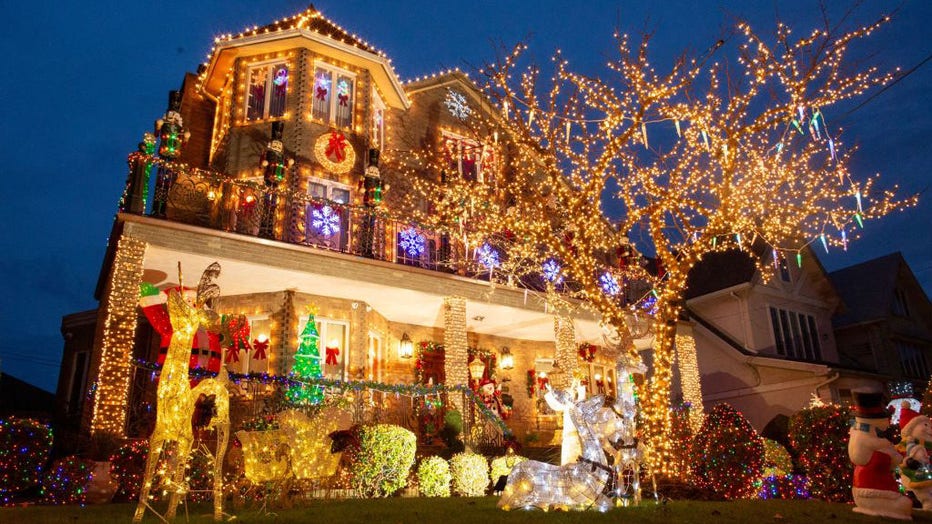How weather impacts Christmas light displays
Millions of Americans will deck the halls for the upcoming holiday season, but every year Mother Nature threatens to play the role of Grinch with outdoor displays.
From abnormally warm temperatures to rain showers, the impacts of adverse weather can affect every aspect from illumination to cutting off electricity needed to power the lights.
The U.S. Department of Energy reports American consumers are switching from incandescent to more energy-efficient LED bulbs, but the change does mean homeowners will be immune from issues.

Christmas lights and ornaments are pictured in a house in Dyker Heights neighborhood in Brooklyn, New York, on December 11, 2021. (Photo by Kena Betancur / AFP via Getty Images)
A common problem seen during wet weather events is the tripping of a home’s ground-fault circuit interrupter (GFCI), which automatically ends the power supply to any strands plugged into the outlet.
The experts at ChristmasDesigners.com say the GFCIs are in place to prevent electrocutions, but the features can be temperamental and an intrusion as small as moisture can cause the entire light display to go dark.
To minimize the chance of a tripping, it’s suggested electric cords be in good working condition, electric outlets have protective bubble covers and lights are as high and dry as possible.
Experts suggest using Christmas lights with an Ingress Protection rating of at least 65.
An IP rating is a standard used to rate an item’s protection against any foreign objects and liquid.
A IP65 rating is considered sufficient enough to protect against most dust and water intrusion.
HOW CHRISTMAS LIGHTS WERE INVENTED TO PROMOTE EDISON’S LIGHT BULB
A weather phenomenon that the southern tier of the country is not immune to is the potential for warm temperatures.
Studies have shown that LEDs can perform better under cooler air temperatures than during warmer conditions.
The staff at LED Lights Unlimited said the colder air can put less stress on bulbs, making them last longer, and their high intensity will make any display more sparkling.
More modern LEDs appear to be better able to handle temperature extremes than incandescent lights.

Average date of the first snowfall of the season. (FOX Weather)
FROM FALLS, FLAMES, SLIPS AND TRIPS, AVOID THESE ‘ELF ON THE SHELF’ DANGERS
If it isn’t the rain or temperatures causing issues, sometimes the wind can play havoc with decorations.
When the forecast calls for either breezy or windy conditions, objects that aren’t properly secured can easily be pushed around and end up being blown down the street.
The experts at Christmas Central have several tips to keep those giant inflatables from flying away.
The holiday experts suggest using stakes, sandbags and even twine to keep the blow up figures in place and these techniques usually work as long as winds don't reach severe status.
But if you want guaranteed success, you might have to temporarily store the holiday decorations until the threat of significant wind passes.

